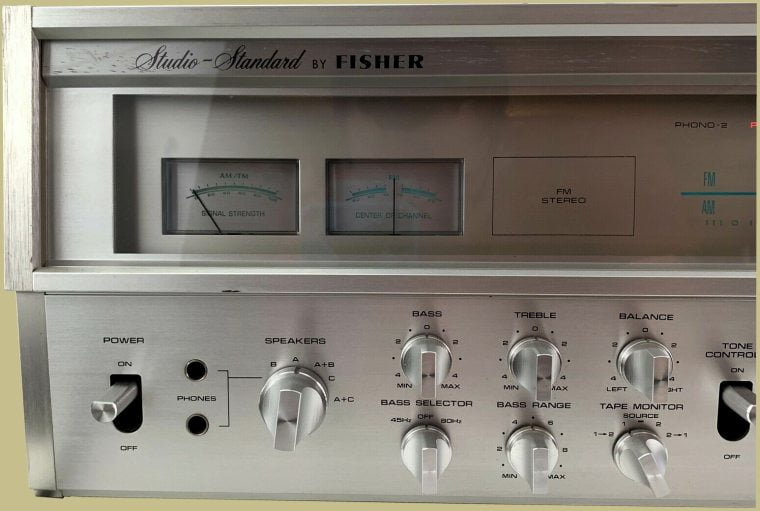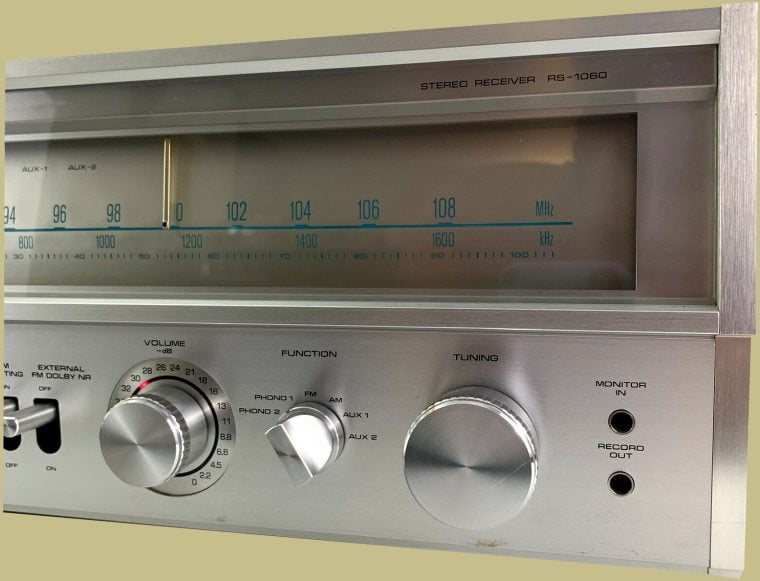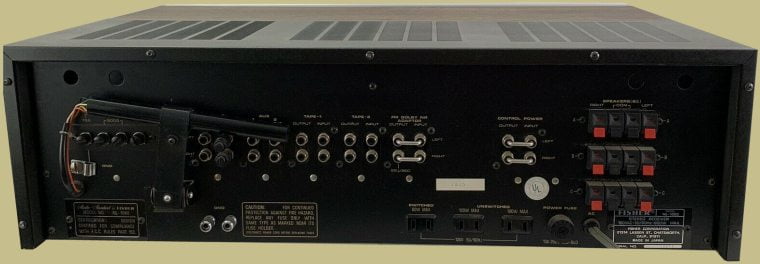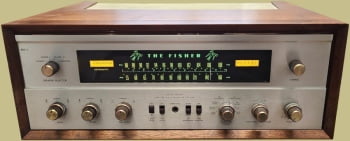
Many would consider this Fisher RS-1060 a monster receiver since it produces 125 watts per channel. It was manufactured from 1977 until 1979 and retailed for around $700. Emerson Electric took over Fisher in the early 70’s and by 1975 Sanyo had taken over the brand and added ‘Studio Standard’ to the name. Build quality had declined by that time but the higher end solid state receivers were still built pretty well. The RS-1060 was second in line, in terms of size and features, to the RS-1080 which put out 170 watts per channel and was a true monster.

The RS-1060 was built to compete with the the Sansui 9090DB, Pioneer SX-1080 and Marantz’s 2325. There is some debate whether it was truly competitive or not, but some believe it performs at least as well. It is certainly harder to find than the other above mentioned receivers.
The RS-1060 is huge. Its dimensions are 23-3/4 x 7-3/8 x 16-15/16 inches and it weighs a back breaking 54 pounds.

While the RS-1060 has both Bass and Treble controls it also has Bass Selector and Bass Range controls which give the listener far more flexibility when adjusting bass to their liking. The user can use the Bass Selector to choose between boosting the 45Hz range or the 80Hz range or neither, then use the Bass Range control to select the amount of boost within the selected range. So, you can augment bass boost inside a narrower frequency range which should result in a cleaner bass. Other receivers tend to boost bass response over a large range which can result in a muddy sound.

Note the cool red LED lights in the dial indicator tip and volume control knob. Some of the RS-1060 receiver’s other features are:
- Total harmonic distortion: 0.1%
- Speaker load impedance: 8Ω (minimum)
- 3 tape inputs
- 2 aux inputs
- 2 phono inputs
- 3 speaker pair outputs
- Multiple filters and tone controls
- Dolby capability
- Red lit source indicators
- Red LED in the volume control
- 5 gang FM front end

While the Fisher RS-1060 has myriad features and enough wattage to power most any speakers it is lacking in aesthetics. It’s just not the greatest looking receiver. That may be one reason why consumers tended to prefer similar models from Pioneer or Marantz.

While build quality was not the same as Fisher gear from the 50’s or 60’s the RS-1060 still had some higher end components. The transformer is huge and the big transistors on the power supply and amp boards have their own heat sinks. The circuit boards are organized and clean as well.

There is definitely less interest in Sanyo built Fisher receivers. The older Fisher tube receivers fetch big money these days but the mid to late 1970’s Fisher gear flies under the radar. But, the RS-1060 is big and rare so they still fetch decent money. They sell for anywhere from $700 to $900 which isn’t bad for a monster receiver.

